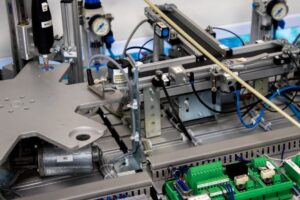
In the past few years, there have been many new trends in the architecture industry. New software in the form of Augmented Reality (AR) and Building Information Modelling (BIM) has brought architectural design into the digital era. Green technology has helped to make building work more sustainable. Here a few examples of how technology is transforming architecture.
Augmented Reality (AR)
Augmented Reality (AR) is a very handy planning tool for architects. With the integration of 3D models of terrain and buildings, you get an accurate and realistic picture of how new structures will fit into their surroundings. You can even include the existing underground infrastructure. There are several kinds of augmented reality apps available for architecture.
AR puts also clients at the centre of the architectural process. Clients are able to view virtual versions of projects way before their completion, allowing for better ideas and customer satisfaction. It adds a great advantage from a selling point of view in the real estate industry as well.
Building Information Modelling (BIM)
BIM technology reduces risks and costs in planning. It’s essentially the process of creating and managing information digitally across a building project’s life-cycle. BIM allows problems to be solved virtually before they end up causing issues on the actual construction site. It’s basically a virtual 3D model of the project that involves everyone from the architect to the owner.
BIM facilitates the interaction and sharing of information from all perspectives at the early planning stages. It’s supported by digital representations of physical and functional characteristics of places so that architects can get a clearer idea. It can also give an accurate estimation of the materials needed to complete a project.
Green Building Technology
The construction industry is responsible for almost 38% of the world’s emissions. Green technology focusses on changing building projects to make them more sustainable. Different materials such as self-healing asphalt are becoming more widely used. Green technology also focuses on making buildings that will last longer, and that are economically and environmentally efficient.
Architecture Companies are striving towards a greener future in construction. This means opting for sustainable materials and smart home options. Newer builds are designed for the digital age with modern appliances and electrics that can be controlled remotely. It’s important to be resource-efficient across all areas.
Conservation Technology
Architectural conservation technology is used to save landmarks. Lasers have already been used to make 3D representations of Notre Dame for example. 3D printing is also used in recreating lost buildings. These futuristic advances in technology all help to preserve a part of history.
Scanning technology is used to create images of heritage sights. There are several projects going on worldwide in order to digitally record historical landmarks. 3D rendering and augmented reality make it possible to recreate these and any lost artefacts.
Digital technology is transforming many aspects of Architecture, from design to rendering to construction. It’s a new way forward and technological advances help to streamline the entire process, reducing cost and benefiting everyone involved.



